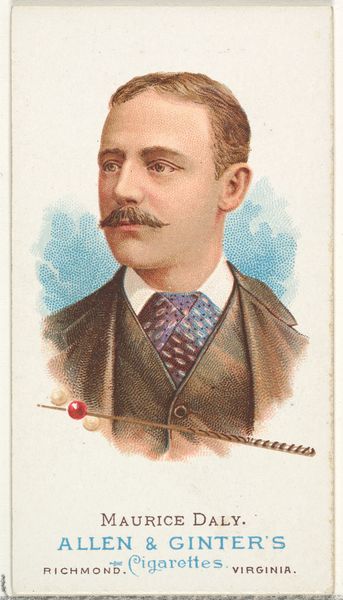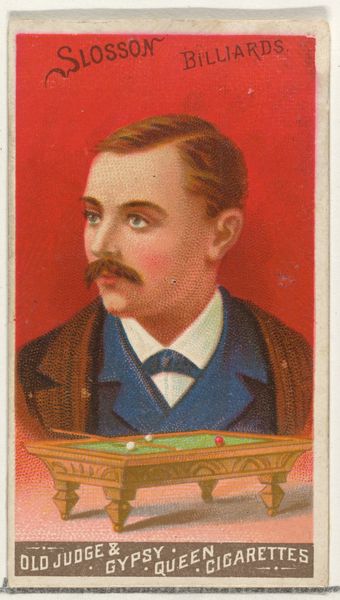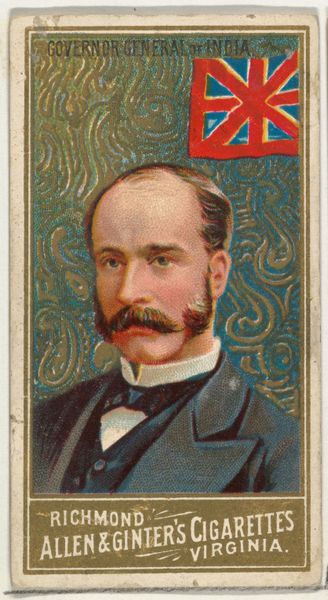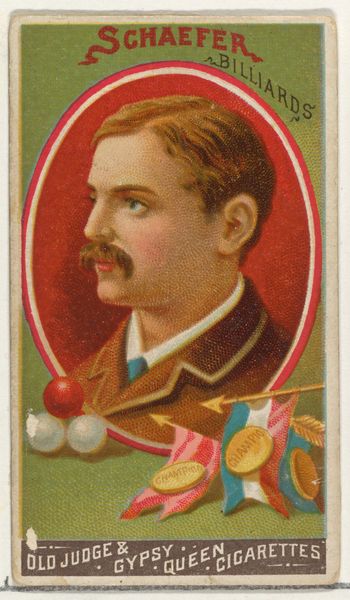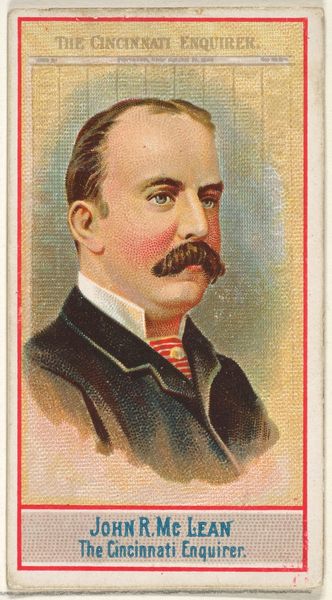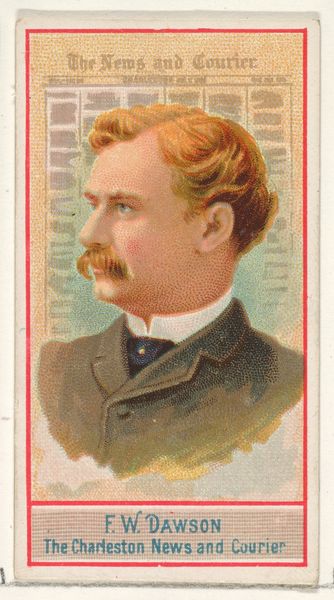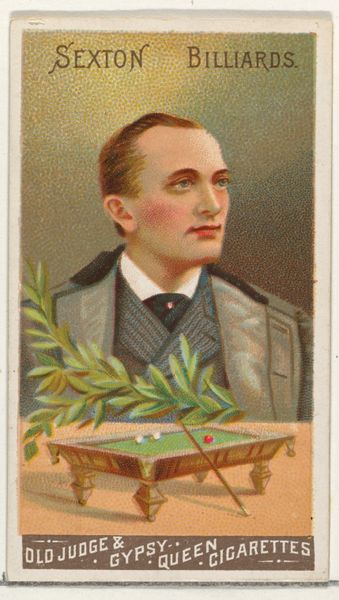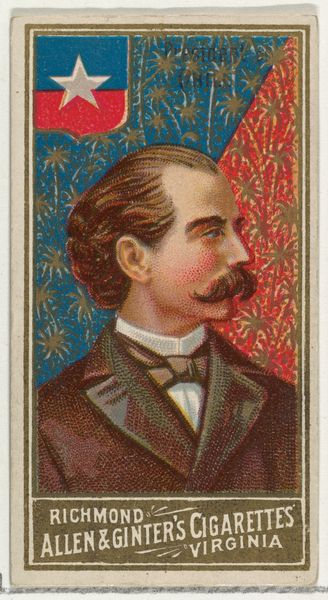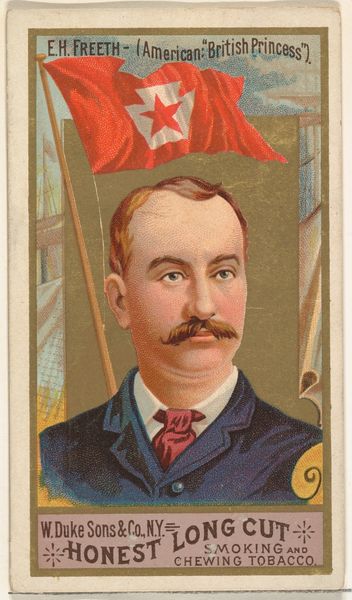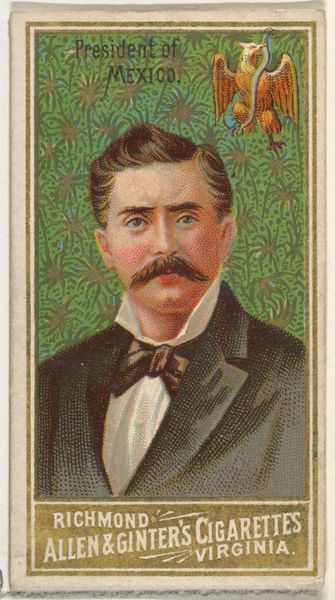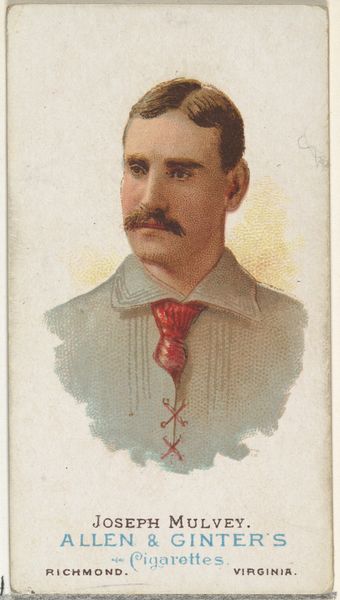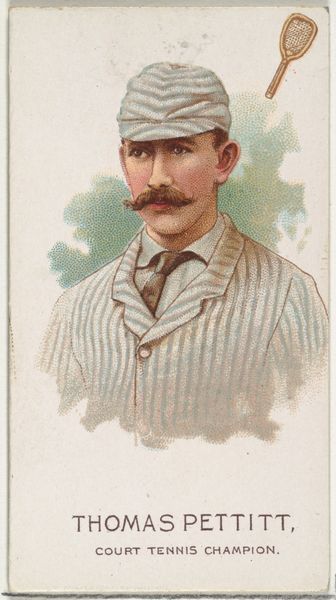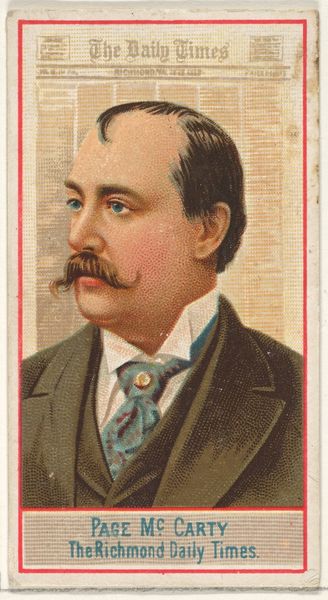
Daly, Billiards, from the Goodwin Champion series for Old Judge and Gypsy Queen Cigarettes 1888
0:00
0:00
Dimensions: sheet: 2 5/8 x 1 1/2 in. (6.6 x 3.8 cm)
Copyright: Public Domain
Curator: This striking little print is entitled "Daly, Billiards," and it comes to us from the Goodwin Champion series created in 1888 for Old Judge and Gypsy Queen Cigarettes. Editor: There's a rather formal stillness to it, isn’t there? And also a sort of theatrical flourish with all the filigree… feels like stage setting more than real life. Curator: I see what you mean. These cards served as advertisements, trading cards, and miniature portraits of contemporary figures. Consider the context—late 19th century America, an emerging consumer culture... Think about who had access to leisure activities like billiards, and the ways tobacco companies might be exploiting those cultural aspirations. This speaks volumes about class and identity at the time. Editor: Absolutely. The means of production interest me, too. The creation of this card would require various forms of labor: the photographer who initially captured Daly's likeness, the draftsmen and engravers involved in transforming the photograph into a printable image, not to mention the factory workers responsible for printing and packaging these cards along with the cigarettes. The value isn’t simply the aesthetic image; it’s the social labor embedded within. Curator: Indeed, we could also talk about representations of masculinity during the Gilded Age, or the intersection of sport and celebrity culture. Daly, a billiards champion, is presented here for mass consumption, and his image is tied directly to commodities like tobacco. These aren’t just innocent collectibles; they are active participants in the construction of cultural narratives. What is seen is less important than what is unspoken, don't you think? Editor: And it highlights how "high" and "low" art were much more fluid than we often assume. Printmaking democratized image production and distribution, offering more accessible representations than painting might allow. These materials provide us with information about mass manufacture of images at this period in time. It's crucial to assess how art meets everyday life. Curator: Well, looking at it through a wide lens allows us to examine larger societal influences on seemingly mundane things. Thank you for adding perspective to the piece. Editor: Always. Seeing the process behind the artwork reveals just how meaningful the mundane can be.
Comments
No comments
Be the first to comment and join the conversation on the ultimate creative platform.
